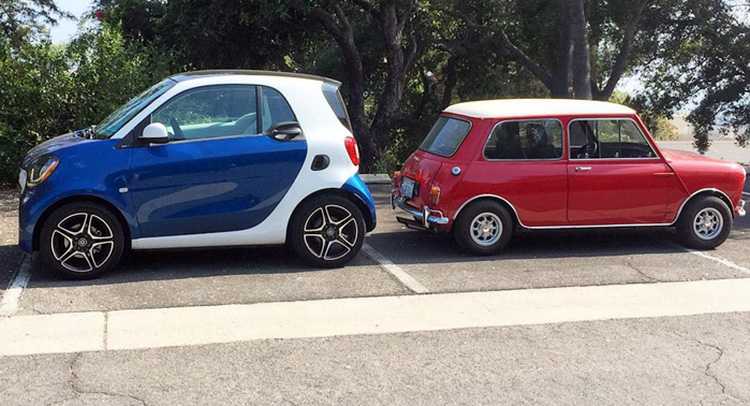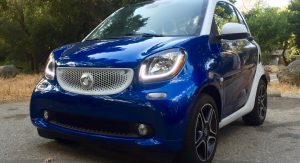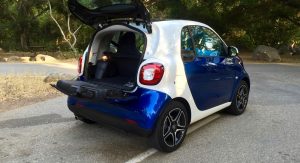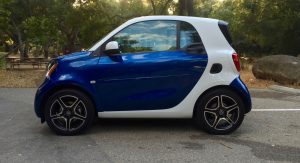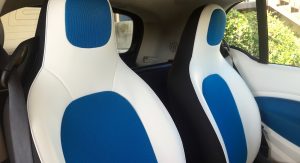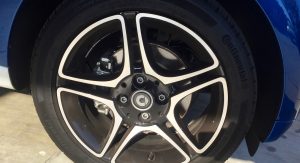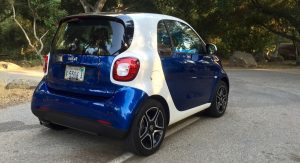It’s fair to call the Smart ForTwo a niche car; after all, its mission is to occupy small spaces other cars cannot.
While that argument works well in urban areas, the Smart has long been criticized for feeling like a caricature of a car in anything but city traffic. Highways revealed a choppy handling and breathless engine and fuel economy that wasn’t anything special considering the size of the car.
I’ve been driving the 2016 Smart ForTwo in top Proxy form and in a rather fetching blue-and-white color scheme. Yes, it’s already better than the old car in a few important ways – and… different in others. Here are some other initial thoughts.
Drop a dime in the street? It’ll turn on it
The turning circle is tight on this Smart, as if it needed to be any smaller than it already was. It’s humorously small, to the point where you want to do nothing but make U-turns all day.
Little smugness
That sharp turning circle also helps with the Smart’s other longtime party trick: fitting into just about every gap. What hasn’t changed much since I first drove a Smart nearly a decade ago is the look some people give you when they watch this half-sized car squeeze into a half-sized spot. Or the look when you get too ambitious and take more than one try at getting into that way-too-small spot.
What if this was like a buddy cop story? #smartcar #mini #minicooper #carsofsbA video posted by Zac Estrada (@zacestrada) on May 29, 2016 at 3:01pm PDT
Turbo, emphasis on boost
As under-powered as the previous Smart was, the real issue was that its old three-cylinder Mitsubishi engine had almost no torque, and Americans were deprived of its marginally more powerful turbocharged option. With 89 horses and 100 lb.-ft. of torque, the new turbo triple is much stronger when more power is needed, and it sounds less strained at 65 mph-and-up speeds. The downside now, however, is that the drivetrain surges way too much for smooth in-town driving. And you still have to mash your right foot down on the on-ramp. This might be a transmission issue.
Better doesn’t always mean best
The six-speed “Twinamic” dual-clutch transmission (a $990 option) is way better than the old five-speed single-clutch transmission you had to have on the old Smart. Shifts are far more immediate in automatic mode. But the turbo boost and some lumpy 1-2 changes still induce head-nodding at low speeds. Something tells me it would be worth it to keep the standard five-speed manual.
Small car, big price
Soon after getting the keys to this Smart, I had a look at the window sticker in the (tiny) glovebox. Perhaps I shouldn’t have, because the $20,570 for this Proxy model has been tough to rationalize. There are many features on this car I could do without, but there’s still the nagging feeling the price is what will ultimately kill the Smart’s value proposition.
My early feeling is that you still have to want this car in order for it to make much sense, but it is a vastly improved everyday transportation device over its predecessor. And magical when you see that one spot on the street that no one else can squeeze into.
What other questions do you have about the Smart ForTwo? Sound off in the comments.
Photos Zac Estrada/Carscoops.com



